Cherry tomatoes: so many varieties!
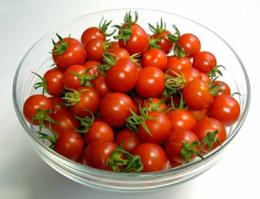
There are no people in the world who are absolutely indifferent to small tomatoes. This variety of tomato is named after the popular berry, the cherry. Cherry tomatoes are reminiscent of cherries.
Content:
- History of selection
- Description of cherry varieties
- Recommendations for planting and growing
- Types and varieties
History of selection
Officially, 1973 is the date of “birth” of these tomatoes. That year, Israeli scientists managed to develop a new variety of tomatoes - small, sweet tomatoes that ripened not singly or in pairs, but in clusters. An experiment to create tomatoes that ripen slowly in hot climates has exceeded expectations. Genetic biologists together with breeders have created cherry tomatoes, which are now popular all over the world.
If we describe this variety of tomatoes, it should be noted that with proper cultivation and care, you can count up to 20 or more small tomatoes on one bunch. Their shape and color depend on the variety and growing conditions. There are red, yellow, orange, brown, green, brown, pink and even black cherry fruits.
The shape of cherry tomatoes does not always resemble cherries. Modern breeders have achieved many varied results over the past decades. Small tomatoes can be round, elongated, flattened, or teardrop-shaped. In shape they can resemble a pear, pumpkin, zucchini, or berries. The taste of these tomatoes has various shades, but it is always the pronounced sweetness of the tomatoes.
On an industrial scale Cherry tomatoes already used in many countries. The main suppliers are Türkiye, Holland, Spain, Italy, Chile.
In local latitudes, as well as in Europe, growing different varieties of cherry on garden plots and balconies is more of a decorative nature. Our gardeners and farmers do not yet set the goal of growing these tomatoes for harvesting and mass consumption. But any gardener and gardener when growing cherry tomatoes is proud of the result. The beauty of ripe, cascading long clusters is mesmerizing.
Description of cherry varieties
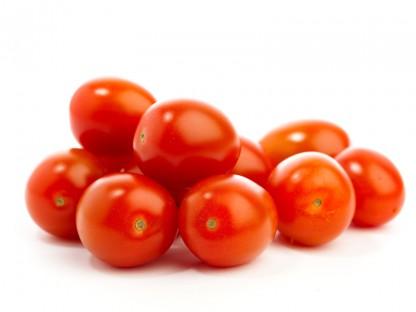
Depending on the variety of tomatoes, they can be grown both on a personal plot in greenhouses and in open ground, and in pots on balconies and window sills. But some support is always necessary, since the trunk cannot support the weight of ripe cherry clusters. In some varieties, the length of each bunch can reach 1 meter in some industrial varieties. The weight of each small tomato does not exceed 25 grams. Cherry tomatoes have a special property: they ripen together, are resistant to cracking and are almost equal in weight to each other.
These tomatoes look very impressive in hanging planters. Small berries hanging on the clusters create the impression of beads against the background of carved foliage. At home, cherry tomatoes sown in March can bear fruit for almost a year. Of all the types and varieties of tomatoes, cherry tomatoes are the fastest ripening and disease resistant.
Like regular tomatoes, cherry tomatoes are divided into:
- Tall (indeterminate)
- Low-growing (determinant)
- Average (semi-determinant)
Cherry tomatoes, like regular tomatoes, can be hybrid and varietal. It should be remembered that hybrids are not collected for seeds, since they do not retain their parental characteristics.Any tomato can grow from the seeds of a cherry hybrid. You can leave the fruit of varietal tomatoes for seeds. When purchasing seeds, you should definitely follow the recommendations on agricultural technology for growing this variety of tomatoes.
Recommendations for planting and growing
General recommendations for growing cherry tomatoes:
- Without soaking, seeds are placed directly into boxes or other objects prepared for planting.
- Land for planting: a mixture of black soil and sand, in a ratio of 4:1 or 3:1.
- The seeds are placed shallowly in the ground, watered with warm water and covered with cling film.
- After the sprouts appear, the film is removed. This happens no earlier than 5 days after planting.
- After strengthening the sprouts, thinning is done, leaving the strongest ones. If not all seeds sprouted or the planting was sparse, thinning is not necessary.
- Periodically it is necessary to water and loosen the soil. You can feed plants with fertilizers, but not more often than once every 2 weeks.
- In the case of transplanting seedlings, this must be done before the flowers begin to set, no later than a month after germination and the appearance of sprouts.
- When planting tall varieties, you need to put up stakes and tie up the plant.
- Cherry doesn't need to be picked. Do not trim the main leaves - this will cause a lack of fruiting.
Usually the fruits set after 2-4 months of planting. Maturation occurs quickly. One cherry tomato plant can produce fruit within 6 months.
Types and varieties
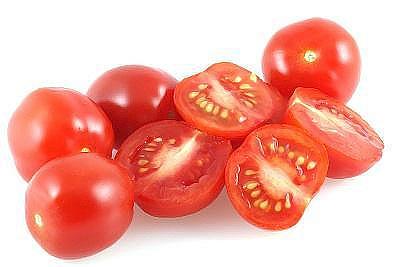
Usually varieties cherry tomatoes They are also divided according to the method of cultivation. Before purchasing seeds for planting, you need to decide where to grow tomatoes. Cherry tomatoes - their varieties are varied and magnificent.
Varieties for open ground
- Beads. Domestic selection. Small red sweet fruits.
- Lemon. Domestic selection. The fruits are light yellow, not sweet, and resemble the shape of the fruit of the same name.
- Green pearl. Sweet and sour green-yellow fruits are oval, sometimes teardrop-shaped.
- Noon. A medium-sized Russian variety with orange round fruits.
- Sunny bunny. Large cherry variety of domestic selection with bright yellow or light yellow slightly elongated fruits.
- Sangella. Early hybrid. Tall. Koas fruits have a sweet taste.
- Chocolate pearls. A hybrid variety similar to a wild one. Fruits until frost. The skin of the fruit is dense and brown. The fruits have a sweet taste.
- Crazy cherry. It grows even in cool conditions and bears fruit. Tall variety that does not require staking. The fruits have a sweet, rich taste.
- Rose quartz. Large pink cherry tomatoes with an unusual aroma.
- Bourgeois prince. Italian selection. The most popular variety in Europe, intended not only for preservation, but also for drying. Tall bush variety.
- White cherry tomatoes. Import selection. The fruits are similar in appearance and taste to raisin grapes. It bears fruit for a long time.
- Amber. Early ripening domestic variety with orange fruits. Gives a high yield in the form of juicy and sweet medium fruits.
- Orange grapes. Domestic selection. The fruits have a sour taste and are suitable for various preservations. Up to 1000 ovaries can bloom on 1 brush. Bush variety, tall.
- Honey drop. An early-ripening variety with drop-shaped yellow fruits that have a hint of honey in taste and aroma.
- Melon slice. Spanish variety. The fruits are sweet, yellow, round, and have a melon-like flavor. They bear fruit for a long time.
- White currant.The fruits have an extraordinary creamy color and amazing taste.
- OUTDOOR GIRL (street girl). Early variety with ribbed red fruits of medium size. Import selection.
- SUNGOLD (solar gold). Orange-red small fruits with a sweet taste. Import selection.
- GARDENER'S DELIGHT (gardener's delight). Spanish selection. Sweet red fruits with thin skin.
- SUMMER SWEET (sweet summer). Imported variety with high yield. The fruits are plum-shaped, dark red.
- Punto. Early variety with medium-sized red fruits, hybrid.
- Golden Rain. A tall variety with drop-shaped small yellow fruits that requires pinching and tying.
- Swia Pia. The smallest variety in the world. Often used as a hedge. Fruits until frost. The fruits are red and sweet.
Varieties for growing in greenhouses
- Madeira. Hybrid variety. Medium sized fruits. Color red. Fruits until frost. Resistant to diseases.
- Pink cherry. The fruits are medium-sized, pink in color with a pleasant sweet and sour taste.
- Bunch Ildi. Hybrid of imported selection. The fruits are yellow, round, and have a spicy taste. One cluster can bear up to 100 fruits.
- Kira. Domestic hybrid. The fruits are orange, medium size. They have the ability to be stored for a long time.
- Marishka. Russian hybrid. Tall, early ripening. The fruits are medium-sized, round, pink-raspberry in color. Resistant to diseases.
- Gold bead. Tall domestic hybrid. It has small yellow-orange fruits. The skin is dense, the flesh is sweet.
- Cherry Lycopa. Russian hybrid of mid-early maturation. The fruits are small, red and sweet.
- Greenfinch. Mid-season variety of domestic selection. Hybrid.The fruits are small, round, yellow-green, dense, with a delicate taste.
- Black cherry. The plant is often confused with a tree, and the fruit is considered a fruit rather than a vegetable. They have a sweet taste. The fruits are dark purple.
- Yellow Mimi. Hybrid of imported selection. The fruits are small, yellow, sweet.
- Caprice. Hybrid with medium-sized red cylindrical fruits.
- Raisin. Mid-season hybrid with small oval fruits of sweet taste.
- SWEET MILLION (sweet million). Hybrid of imported selection. The fruits are bright red with thin skin and a sweet taste.
- GOLDEN CHERRY (golden cherry). Foreign selection. A hybrid with golden-yellow sweet fruits and thin skin. The fruit is the size of a tennis ball.
- Shy blush. Domestic selection. The fruits are elongated and have stripes of two colors. The fruits are sweet and medium in size.
- Jade Gem and Emerald Gem. Hybrid varieties with green fruits. When ripe, they acquire a marshmallow taste.
- Purple bumblebee. American selection. It has medium-sized fruits with a peculiar two-color color. Sweet fruits with thick skin.
Varieties for growing on balconies, window sills and hanging pots
- Bonsai. Ultra early ripening miniature hybrid. Does not require molding. The fruits are sweet with thick skin.
- Balcony miracle. Compact variety. The fruits are red, juicy, sweet.
- Pinocchio. A hybrid with medium red fruits and a sweet taste.
- Golden bunch. Salad variety with medium-sized orange fruits.
- Minibel. Miniature variety with medium-sized fruits. The fruits are sweet.
- Little Red Riding Hood. Early ripening miniature domestic variety. The fruits are medium, red, sweet. Has low productivity.
- Rowan miracle.A mid-ripening variety with medium-sized fruits and a sweet and sour red taste.
- Pearl. An early variety with pink fruits, sweet and sour taste and delicate skin.
- Totem. Dwarf imported hybrid. The fruits are small and very sweet, red in color.
- Tiny Tim. The bright red fruits have delicate skin and a sweet taste. Has high productivity. Import selection.
- TUMBLER (acrobat). Import selection. It has weak stems, but has a high yield; the fruits are small, sweet, and do not ripen at the same time.
- Mio. Small bushes with large red cherry fruits. They have a pronounced tomato taste.
Any variety of cherry is practically no different in its vitamin and mineral composition from ordinary tomatoes. However, it should be noted that almost every variety of small tomatoes has a high level of sugar content. At the same time, cherry tomatoes remain a low-calorie product. However, these tomatoes are contraindicated for diabetics and people suffering from peptic ulcers.
The high lycopene content in cherry fruits helps prevent cancer of many organs. It is known that cherry tomatoes have the ability to improve mood. These tomatoes are always a favorite product and treat for children.
Video about growing cherry tomatoes on the balcony:
Interesting information about the vegetable garden

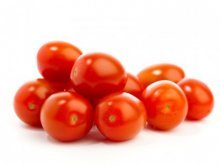
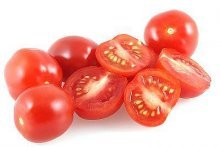
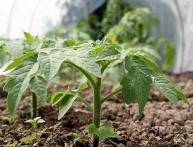
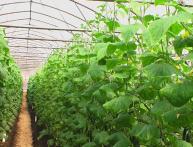
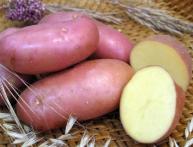
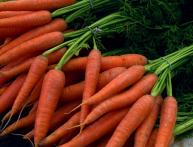
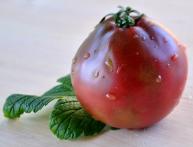

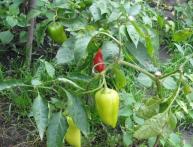

Comments
I really love this variety of tomatoes. We have been regularly planting cherry tomatoes in the garden for several years now. I really like their taste and appearance. I try to find not only red cherry, but also pink, orange and yellow. They taste no different, but how beautiful they look in a salad or in winter preparations!